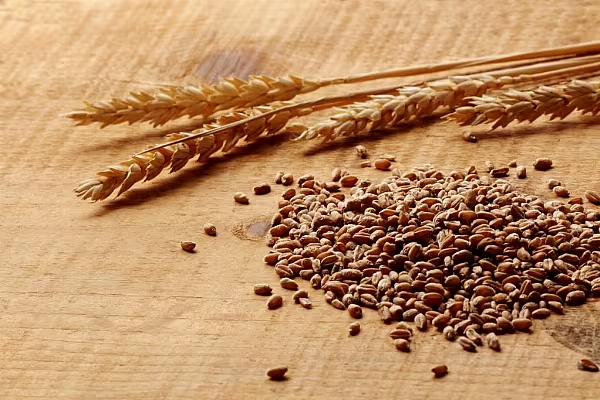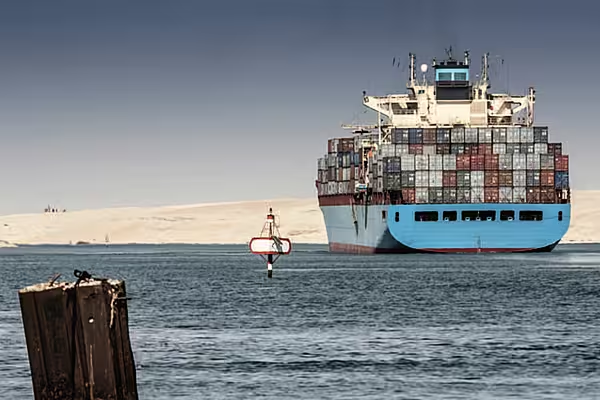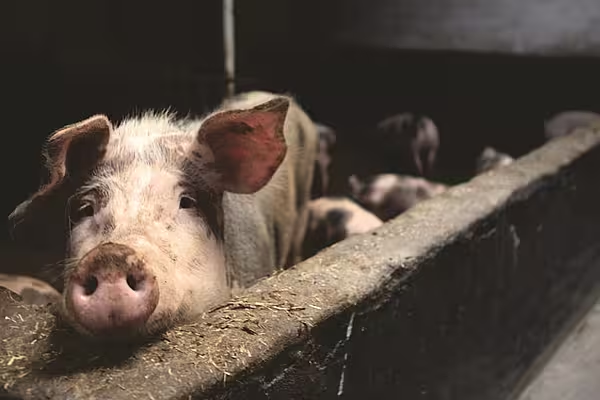Russian President Vladimir Putin mooted on Wednesday reopening a UN-brokered deal for Ukrainian grain exports via the Black Sea saying that Moscow and the developing world had been "cheated".
The agreement reached in July, creating a protected sea transit corridor, was designed to alleviate global food shortages, with Ukraine's customers including some of the world's poorest countries.
UN Secretary-General Antonio Guterres has said the deal would bring relief to developing countries "on the edge of bankruptcy and the most vulnerable people on the edge of famine".
Nevertheless, the agreement from the outset was based on facilitating commercial shipments.
The early focus has also inevitably been on moving ships which had been stuck in Ukrainian ports for months, most of which were laden with corn and booked by developed countries such as Spain to be used for animal feed or biofuels.
The bulk of last year's wheat crop in Ukraine, which is harvested earlier than corn, had already been shipped when Russian troops entered the country.
Developing countries such as Somalia and Eritrea rely heavily on imports of wheat from both Russia and Ukraine.
Here are some of the issues:
What Has Been Exported?
The pact created a safe shipping channel for exports from three ports in Ukraine and the early focus was enabling ships that had been trapped in the war torn country since Russia's invasion in February to leave.
So far, some 2.07 million tonnes of agricultural products have been shipped, predominately corn, but also volumes of soybeans, sunflower oil, sunflower meal and barley. Shipments of wheat have reached just over 500,000 tonnes.
This partly reflects the timing of Russia's invasion as much of last year's wheat crop had already been exported in February, as it is harvested several months before corn and so tends to be shipped earlier.
There is an estimated three million tonnes of grain in ports that needs to be moved first, which will probably take until around mid-September to clear.
A full breakdown of the countries and quantities exported can be found here.
Ukraine's farming minister Mykola Solsky told Reuters last week that agricultural exports could rise to 6 million-6.5 million tonnes in October, double the volume seen in July.
However, there are still too few large ships coming in to keep the required pace of volume needed.
The exclusion of Mykolaiv, the country's second-largest grain terminal according to 2021 shipment data, also makes such an export push challenging.
Will It Alleviate The Food Crisis?
The sharp decline in shipments from Ukraine played a role in driving up global food prices at a time when world hunger is on the rise. The COVID-19 pandemic and climate shocks have also contributed to food price inflation.
Much larger volumes will need to be shipped through the corridor, however, to have a substantial impact on global supplies.
Ukraine has around 20 million tonnes of grain left over from last year's crop piled up across the country, as well as this year's wheat harvest, which is estimated at about a further 20 million tonnes.
The three ports involved in the deal – Odesa, Chornomorsk and Pivdennyi - have the combined capacity to ship around three million tonnes a month and some expect this level of exports could potentially be achieved in October.
It will, however, need a huge number of ships to transport such a large volume of grain and some shipowners may be wary to enter a war zone, particularly with the threat posed by mines and the high cost of insurance.
Has It Driven Down Global Wheat Prices?
Prices of wheat on the Chicago Board of Trade rose sharply in the aftermath of Russia's invasion of Ukraine but had already fallen back to pre-invasion levels by early July, weeks before the sea corridor was agreed.
Key factors driving down Chicago wheat prices include a record crop in major exporter Russia this year, a gloomy global economic outlook and a strong dollar.
The potential for more exports from Ukraine has, however, been cited by analysts as a bearish market factor even though only around 500,000 tonnes of wheat has so far been shipped through the corridor. Ukraine has exported around 18 million tonnes a year in recent seasons.
Prices for wheat-based food staples such as bread and noodles remain well above pre-invasion levels in many developing countries despite the decline in Chicago futures due to weak local currencies and higher energy prices which have raised costs such as transport and packaging.
What About The Sea Mines?
Russia and Ukraine accuse each other of planting the many naval mines that now float around the Black Sea. These pose a significant threat and were cited by one crew member on the first ship, the Sierra Leone-flagged Razoni, as the one thing he feared.
The mines have drifted far from Ukraine's shores, with Romanian, Bulgarian and Turkish military diving teams defusing those that have ended up in their waters.
It could take months to clear them and there was not enough time to do so before the grains pact came into effect.
What About Insurance?
The Istanbul based Joint Coordination Centre, which oversees the deal and is made up of Turkish, Russian, Ukrainian and U.N. officials, last month published long-awaited procedures on the shipping channel, which aims to alleviate concerns that insurers and shipowners have.
Insurers had previously said they were willing to provide cover if there were arrangements for international navy escorts and a clear strategy to deal with sea mines.
In one of the first steps following the July 22 agreement, Lloyd's of London insurer Ascot and broker Marsh set up a marine cargo and war insurance for grain and food products moving out of Ukrainian Black Sea ports with $50 million cover for every voyage.
The cost of overall insurance for ships - which includes separate segments of cover - sailing into Ukrainian ports, however, is likely to remain steep.
What About Crews?
In September, Ukraine implemented a decree to allow its seafarers to leave the country despite wartime restrictions in a move aimed at freeing up vital manpower for both Ukrainian grain exports and the wider global shipping industry.
At the start of the conflict there were around 2,000 seafarers from all over the world stranded in Ukrainian ports and is estimated by the International Chamber of Shipping association to have fallen to some 420 mariners.
News by Reuters, edited by ESM – your source for the latest supply chain news. Click subscribe to sign up to ESM: European Supermarket Magazine














